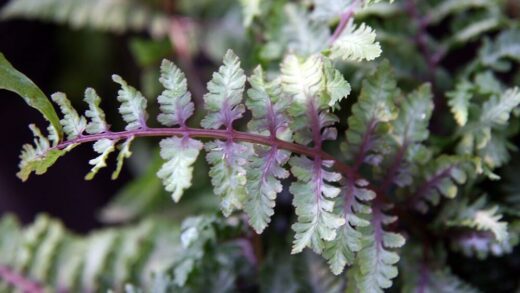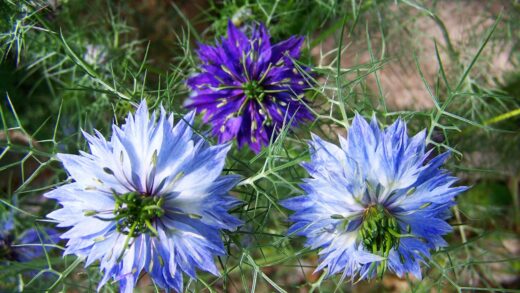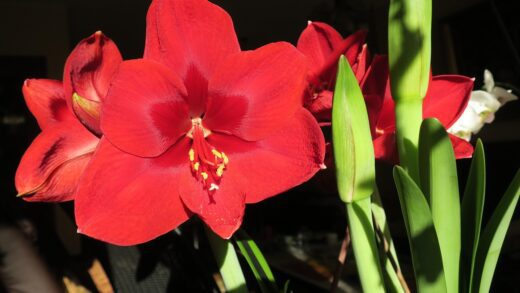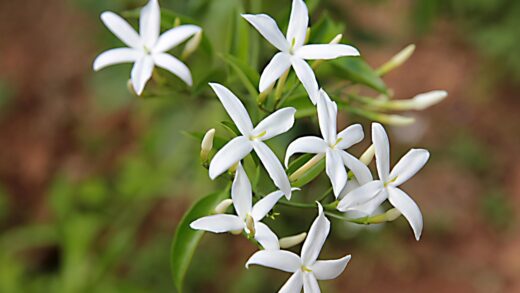The dog rose is fundamentally a sun-loving plant, a characteristic that dictates its placement in the garden and influences its overall health, vigor, and productivity. Its requirement for ample sunlight is directly linked to the fundamental process of photosynthesis, through which the plant converts light energy into the chemical energy needed for all of its growth processes. While it exhibits a degree of tolerance and can survive in less than ideal conditions, its performance in terms of flowering and hip production is dramatically enhanced when its light needs are fully met. Understanding the importance of sunlight is the first step in providing an environment where this resilient shrub can truly flourish and display its full potential.
To thrive and perform at its best, the dog rose requires a position that receives at least six hours of direct, unfiltered sunlight per day. This is often referred to as “full sun” in horticultural terms. A location with a south-facing or west-facing aspect is typically ideal, as these orientations receive the most intense and prolonged sun exposure throughout the day. This abundant light energy fuels the production of the carbohydrates that are essential for developing strong stems, lush foliage, and, most importantly, a profusion of flowers.
While the dog rose can tolerate partial shade, meaning a location that receives between three and six hours of direct sun, its growth habit and flowering will be noticeably affected. In a shadier spot, the plant will tend to become more “leggy” and sparse, as its stems stretch outwards and upwards in an attempt to reach more light. The foliage may be larger but thinner, and the overall density of the shrub will be reduced. This can result in a less aesthetically pleasing form that lacks the dense, arching grace of a sun-grown specimen.
The most significant consequence of insufficient light is a marked reduction in flowering. The plant conserves its limited energy resources for essential survival functions rather than investing them in the energetically expensive process of producing blossoms. Fewer flowers naturally leads to a smaller crop of rose hips in the autumn. Therefore, if the primary reason for growing a dog rose is for its charming flowers or its vitamin-rich hips, providing it with as much direct sunlight as possible is not just a recommendation, but a necessity.
The importance of sunlight for photosynthesis and flowering
Sunlight is the primary energy source for nearly all life on earth, and for the dog rose, it is the crucial ingredient that powers its growth and reproduction. The process of photosynthesis takes place within the leaves, where a pigment called chlorophyll absorbs light energy. This energy is then used to convert carbon dioxide and water into glucose, a type of sugar that serves as the plant’s food. This glucose fuels every aspect of the plant’s life, from the growth of a new leaf to the opening of a flower bud.
More articles on this topic
A location in full sun maximizes the rate at which photosynthesis can occur. With ample light, the dog rose can produce a surplus of energy. This surplus is what allows the plant to move beyond basic survival and invest in activities like flowering and fruiting. The production of flowers is an energetically demanding process, and a plant will only initiate it when it has accumulated sufficient energy reserves. Therefore, a direct correlation exists between the amount of sunlight a dog rose receives and the abundance of its blooms.
Sunlight also plays a critical role in the development and health of the plant. Strong light promotes the growth of sturdy, robust stems that can support the weight of the foliage and flowers. It also helps to create a less hospitable environment for many common fungal diseases. The heat and drying effect of the sun quickly evaporates moisture from the leaf surfaces, which prevents the germination of fungal spores that cause diseases like powdery mildew and black spot. A plant in a shady, damp location is far more susceptible to these ailments.
Furthermore, the intensity and duration of sunlight can influence the coloration of both the flowers and the hips. While the pale pink to white flowers of the dog rose are subtle, their vibrancy can be enhanced by strong light. More importantly, the development of the deep red and orange pigments in the rose hips in autumn is also a sun-dependent process. Hips on a sun-drenched plant will not only be more numerous but will also have a richer color and potentially a higher concentration of beneficial compounds like vitamin C and antioxidants.
Ideal sun exposure for optimal growth
The ideal sun exposure for a dog rose is a location where it can receive unimpeded sunlight for the majority of the day. This means a minimum of six to eight hours of direct sun daily during the growing season. In an open garden, this is relatively easy to achieve. However, in gardens with mature trees, buildings, or other structures, careful site selection is required. It is important to observe how the sun moves across the garden throughout the day and at different times of the year to identify the sunniest spots.
More articles on this topic
A south-facing aspect is often considered the premium location, as it receives sun for the longest period of the day, from morning until late afternoon. A west-facing position is also excellent, as it captures the intense afternoon sun. An east-facing location, which receives the gentler morning sun, can also be suitable, provided it gets at least six hours of direct light before being cast into shade. The least desirable location is a north-facing aspect, which will likely be too shady for the dog rose to flower well.
It is also worth considering the quality of the light. Unfiltered sunlight is best. A location under the canopy of a large, deciduous tree might receive dappled light for much of the day, which is not the same as direct sun. The leaves of the tree filter out a significant portion of the light energy, which will reduce the photosynthetic efficiency of the dog rose. Similarly, a spot that is in the shadow of a building for half the day is receiving no direct light during that period, which must be factored into the daily total.
In very hot climates, a location that offers some light shade from the most intense afternoon sun can be beneficial. While the dog rose is a sun-lover, extreme heat and scorching sun can cause stress, leading to wilted leaves and sun-scalded hips. In these specific regions, a site that receives full morning sun and then some light, dappling shade in the late afternoon might represent the perfect balance, protecting the plant from the worst of the heat while still providing ample light for vigorous growth and flowering.
Signs of insufficient light
A dog rose will provide clear visual cues if it is not receiving enough sunlight. The most obvious and earliest sign is a change in its growth habit. Instead of forming a dense, bushy shrub with gracefully arching canes, the plant will become elongated and spindly. This condition, known as etiolation, occurs as the plant redirects its energy into stem growth, literally stretching its branches out in search of a better light source. The internodes, which are the sections of stem between the leaves, will become noticeably longer than on a sun-grown plant.
The foliage of a light-deprived dog rose will also look different. The leaves may be larger and a darker shade of green as the plant produces more chlorophyll in an attempt to capture every available bit of light. However, these leaves will often be thinner and softer, making them more susceptible to damage and disease. In more severe cases of light deprivation, the lower leaves may begin to turn yellow and drop off as the plant sheds older foliage to conserve energy for new growth that is closer to the light.
The most disappointing sign of insufficient light is, of course, a lack of flowers. A dog rose growing in deep shade may produce very few, or in some cases, no flowers at all. The plant is in survival mode, and it simply does not have the surplus energy required to engage in the reproductive process of flowering. If a previously floriferous dog rose has stopped blooming, and other factors like pruning and nutrition are correct, a change in light conditions—perhaps due to a nearby tree growing larger—should be considered as a primary cause.
Finally, a plant that is weakened by a lack of sunlight will be more vulnerable to pests and diseases. The sparse growth habit and reduced air circulation can create a microclimate that is ideal for fungal pathogens. Furthermore, the plant’s overall vigor is compromised, meaning its natural defense mechanisms are not operating at full capacity. A struggling, light-starved plant is an easy target for aphids and other pests that prey on weakened specimens.
Adapting to partially shaded locations
While full sun is the ideal, it is sometimes necessary to plant a dog rose in a location with partial shade. If this is the case, there are several measures that can be taken to maximize the plant’s chances of success. The most critical factor is to ensure the plant receives as much direct morning sun as possible. The morning sun is less intense than the afternoon sun, but it is crucial for drying the dew off the leaves, which significantly reduces the risk of fungal diseases taking hold. A spot that receives sun from dawn until early afternoon is preferable to one that is shaded in the morning and only gets late afternoon sun.
In a partially shaded location, providing excellent air circulation becomes even more important. This can be achieved through strategic pruning. Thinning out the center of the shrub to remove some of the older canes and any crossing branches will create a more open structure. This allows air to move freely through the plant, which helps to keep the foliage dry and discourages fungal growth. It is also important to give the plant ample space and not crowd it with other plants, which would further impede airflow.
When planting in partial shade, it is important to manage expectations regarding flowering and fruiting. The plant will almost certainly produce fewer blossoms and hips than a specimen grown in full sun. However, it can still be a valuable garden plant, providing attractive foliage and a thorny, structural presence. Accepting this trade-off is key to being satisfied with its performance in a less-than-ideal location. Providing good overall care in terms of watering and soil nutrition will help the plant to make the most of the light it does receive.
If the shade is being cast by overhanging branches from a nearby tree, it may be possible to improve the light conditions by selectively pruning the tree. “Lifting the canopy” by removing some of the lowest branches, or “thinning the crown” by removing some of the interior branches, can allow significantly more light to reach the ground below without having to remove the tree entirely. This can often be enough to transform a marginal location into a suitable one for a dog rose.


















